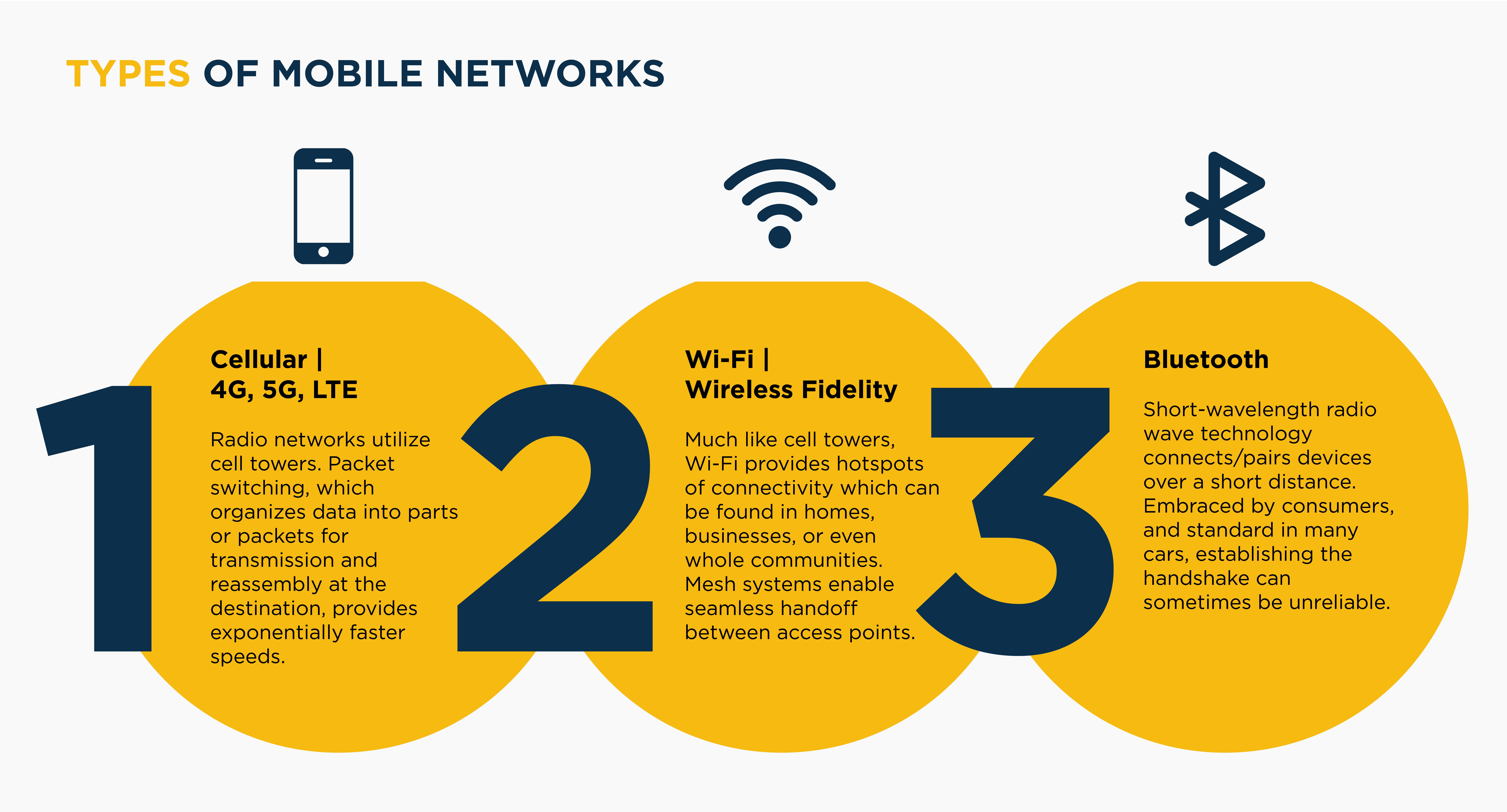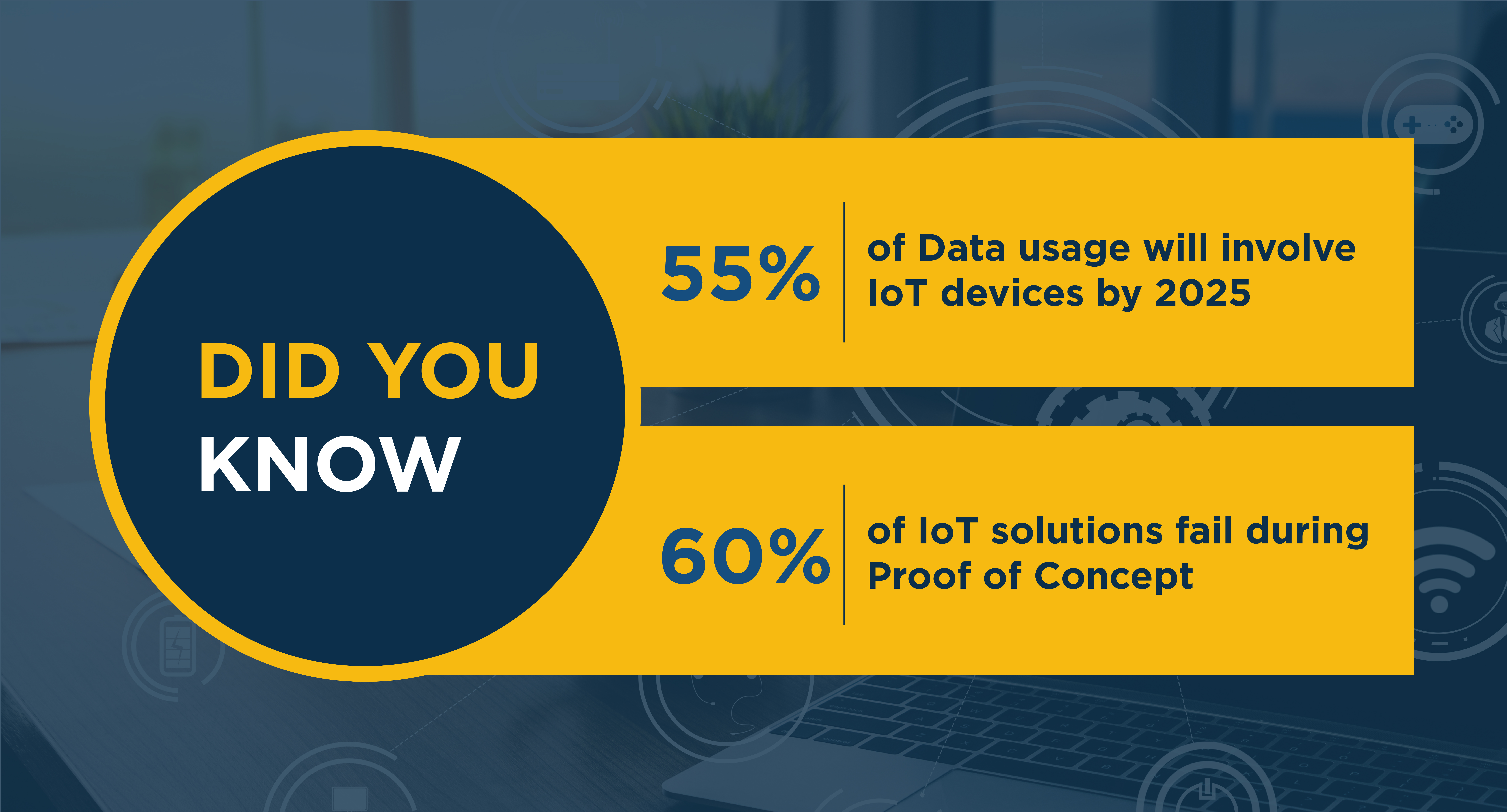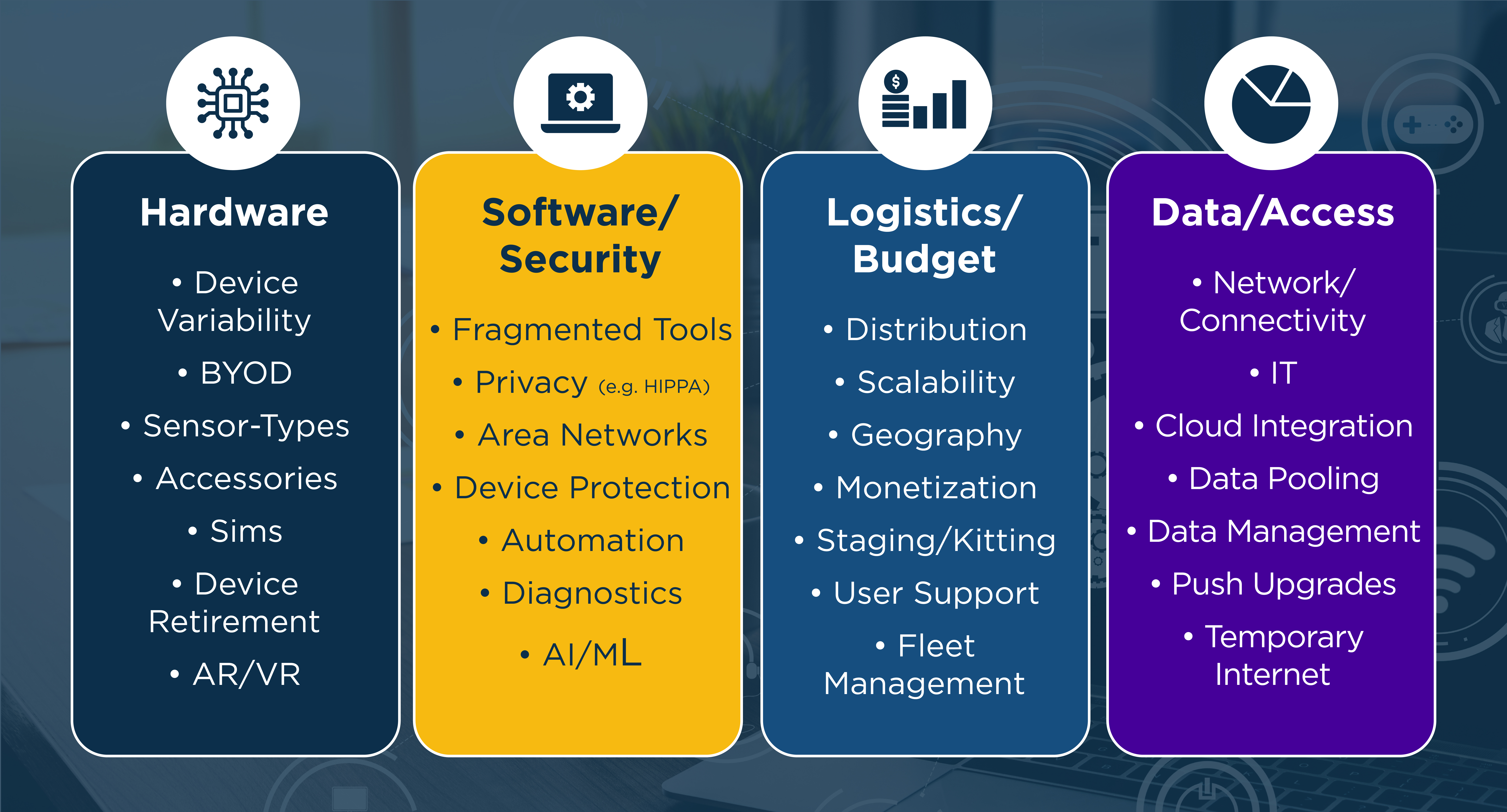Solving Business Problems With Data and Connectivity
Data is one of today’s most valuable commodities. Laptops, cellphones, fleet management, Point of Sale, electronic medical charting, restaurant temperature sensors, retail traffic analysis, seismic sensors, safety equipment status sensors, and the list goes on. How it’s collected, accessed, managed, secured, and maintained is critical — for day-to-day operations, strategic planning, and future viability.
Providing Everything Around Standalone IoT
IoT is just the tip of the spear, requiring many other technology categories to make it meet expectations. Beyond the device, sensor, or technology itself, you need the ability to communicate with it and manage/maintain the tech and the dashboards/systems to make use of the information it provides. This can encompass many categories, including Connectivity (e.g., Mobility), Cloud (storage/network), SD-WAN, Managed Services, Cybersecurity, Analytics, and IT Support.
SD-WAN technology automates and speeds up site deployments, configurations, operations, and troubleshooting tasks. It’s provided for automatic failover so, in the case of one link failure or congestion, traffic can be easily redirected to another link. SD-WAN’s flexible and agile nature empowers the best selection and utilization of connectivity, which can reduce upfront cost while also lowering operating expenses.
Managed Mobility Services (MMS) and Telecom Expense Management (TEM)
Managing another area of licenses, inventory, capabilities, deployment, support, and upkeep can mean another headache for the IT department, an additional specialist to hire, or even a failure to optimize your approach (and minimize the expense). Adopting an MMS or TEM takes these worries away — benefiting the business with everything from comparative usage analysis against a similar size/industry to simply performing Communications Lifecycle Management (CLM), ensuring you never exceed the limits/life of the solution.
On the Topic of Connectivity
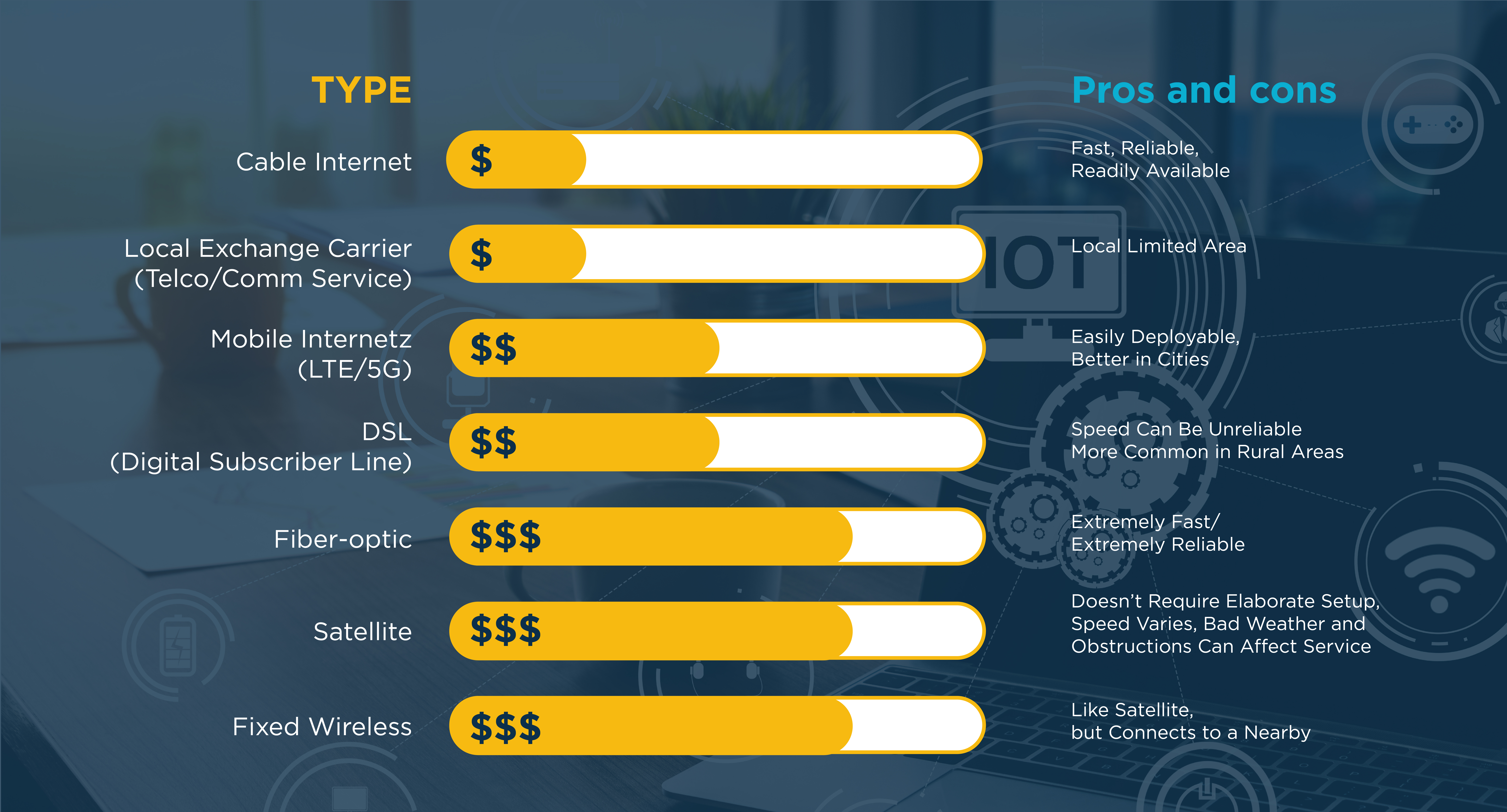
Cellular-based connectivity is a natural choice, particularly with today’s built-out networks and advanced technologies. For “off-the-shelf” IoT, cellular connection is usually the default — for both cost and convenience. But there are options — from the tried-and-true copper wire technologies to wireless solutions like satellite/microwave/cellular to fiber. The type of connectivity chosen can often be influenced by your other network requirements, proximity, and budget. For example, a seismic sensor in the middle of nowhere, connected via fiber, is not only overkill, but it’s also a bad investment.
IoT Is Everywhere, With Everywhere Potential
“What can you learn,” “what can you do,” and “how can you benefit” are the tenets of IoT. Connect an everyday object (car, thermostat, fridge), an industry staple (parking lot counter, medical chart, bridge stress sensor), or the inspired (smart home, wearables, smart grid) and you get actionable information that lets you plan, react, or adapt. IoT can contribute to the happiness and safety of people and their communities. Organizations can leverage IoT to gain insights, reduce costs, and make smarter decisions. A few examples of IoT buildouts include:
- Improved routing of delivery fleets
- Ensuring the charge status of safety equipment, like defibrillators or fire extinguishers
- Like Retail environments, dimming lights in areas without shoppers
- Supply chain management, tracking goods every step of the way
Embrace, and Manage, IoT Approaches
IoT should not be treated like another buzz phrase. If you don’t have your “Synergies” in place, you could fail miserably. There are specialized Providers, and one-stop shops, that can help with every aspect of IoT technology. Here are a few of the potential motivators, and steps, for enacting an Internet of Things approach that can lead to meaningful success.
- Solve a Problem: Technology is a means to an end. Find the pain points and utilize existing approaches to solve them, or think innovatively to develop new answers!
- Develop What’s Missing: IoT is all about making our lives better, easier, or smarter. Find a way to get a more complete picture and access data almost instantaneously while being more responsive and effective.
- Secure Each Point: Take away the opportunity for ill-willed players to gain access anywhere along the data journey. Secure individual points. Wall off task areas. Be aggressive in your security approaches.
- Manage the Initiative: At first look this step can seem daunting — so many sensors, apps, and devices that need to be put into the field, communicated with, and maintained. But like any part of life, the return on investment makes the endeavor worth the effort.
- Deploy, Maintain, Repeat: Action comes with a full spectrum, from sending pallets of devices fresh from the factory (requiring configuration, testing, and deployment) to employing an intermediary step, where individual devices are shipped ready to use straight out of the box.
Perceived Challenges:
Developing an IoT Solution Vs. Sourcing Off the Shelf
There’s a very good chance that, as mentioned earlier, with billions of devices already out in the world, an IoT solution may already exist perfectly tailored for your customer’s needs or require just a slight modification. Developing from scratch can be difficult, with 60% of IoT solutions failing during the proof-of-concept stage. Luckily there are many specialist Providers, and Providers with proven track records, that can help identify the requirements and how to meet them and enact a plan for successful deployment/future management of the solution approach.
Top IoT Verticals/Deployments
- Asset Management
- Transportation
- Smart Cities
- Healthcare
- Retail
- Manufacturing
- Natural Resources
- Urban Management
- Finance
- POTS Replacements
Fully Realize Your IoT With AI/ML
Artificial intelligence (AI) is the ability to mimic/imitate human intelligent behavior and perform tasks that require human intelligence such as thinking, reasoning, learning from experience, and, most importantly, making decisions. Machine learning (ML), a subset of AI, employs learning from data without being programmed or assisted, often referred to as a training model that evaluates performance and accuracy to make reliable predictions. Most references to AI can be more accurately referred to as ML.
IoT means wrangling a lot of data. Incorporating a smart “overseer,” calling it AI or ML, makes this manageable in the moment, or over the long term. Constant readings of a series of sensors along a ground fault or a single heart monitor for a patient can provide information about trends/long-term health or immediately provide warning of an event. Alternatively, smarter applications can filter input, identify/interpret the data, and either address or provide an alert when something falls outside of its defined parameters. The complexity is practically infinite, only limited by what the customer wants to solve or achieve.
The Mobility, Wireless, IoT Webinar on Wednesday October 12th at 10 AM PT/1 PM ET, hosted by Gerry Davis, SVP Sales Engineering and Andrew Rustad, Director, Sales Engineer East to learn more about this interesting category, and ways to introduce and sell solutions to your customers.
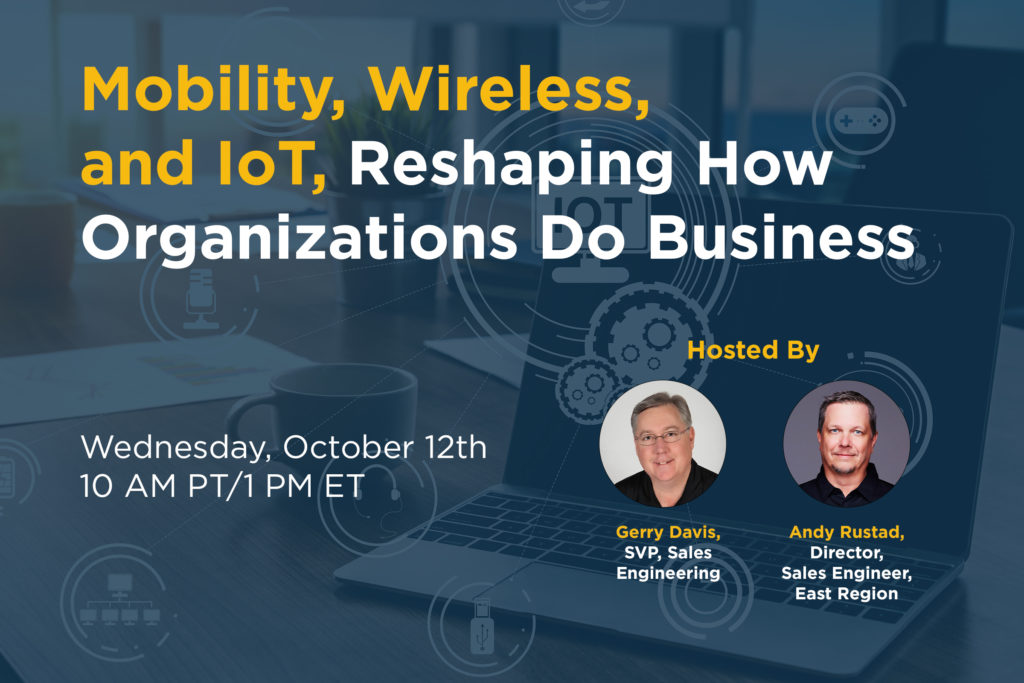
Our team is always here to help you expand your Mobility, Wireless, IoT, and AI/ML business!
Our Featured Providers
AT&T is the largest telecommunications company, second largest provider of mobile telephone services, and the largest provider of fixed telephone services in the United States. AT&T began as Southwestern Bell Telephone Company, one of seven Regional Bell Operating Companies (RBOC) created in 1982 in the divestiture of the American Telephone and Telegraph Company. AT&T Mobility is a wholly owned subsidiary of AT&T that provides wireless services to 138.8 million subscribers in the United States, including Puerto Rico and the US Virgin Islands, and is the second largest wireless telecommunications provider in the US and Puerto Rico behind Verizon Wireless.
For2Fi is dedicated to providing business owners with reliable, affordable, and efficient telecommunications and IT solutions. They are able to help customers achieve easy team communications and access 5G, 4G/LTE and IoT data with major networks whenever and wherever it’s needed. For2Fi use the latest technology and specializes in providing companies that don’t qualify for cable or fiber with fast and reliable internet access. They also offer organizations a range of solutions, including no contracts, managed 4G/LTE data plans with major networks, managed 5G data plans with all national carriers, pooled data plans across all carriers, managed IoT solutions and plug and play pre-configured devices.
Sandler Partners have access to the full portfolio of 70+ SD-WAN solution Providers — including leading providers EPIC iO, ACC Business, Comcast Business, Bigleaf Networks, Comcast, TPx, Masergy, ZeroOutages, HyperCore Networks, and QOS. You can review all your available options by using the Solutions Finder or Solutions Index tools located in the Sandler Portal. For help navigating your way through the process, while discovering the best provider(s) solutions available to meet your client’s requirements, simply contact our Sales Engineering Team!

